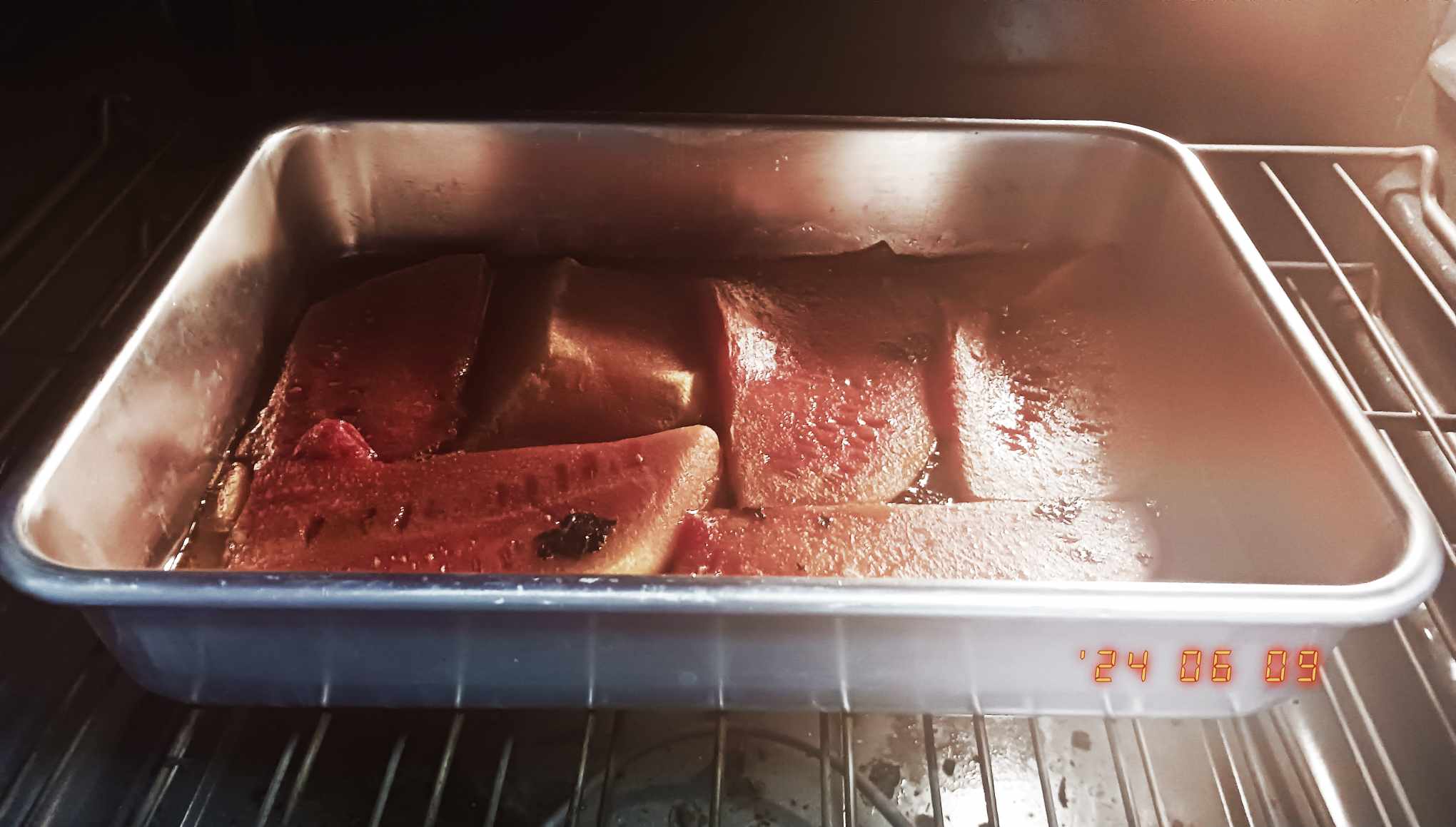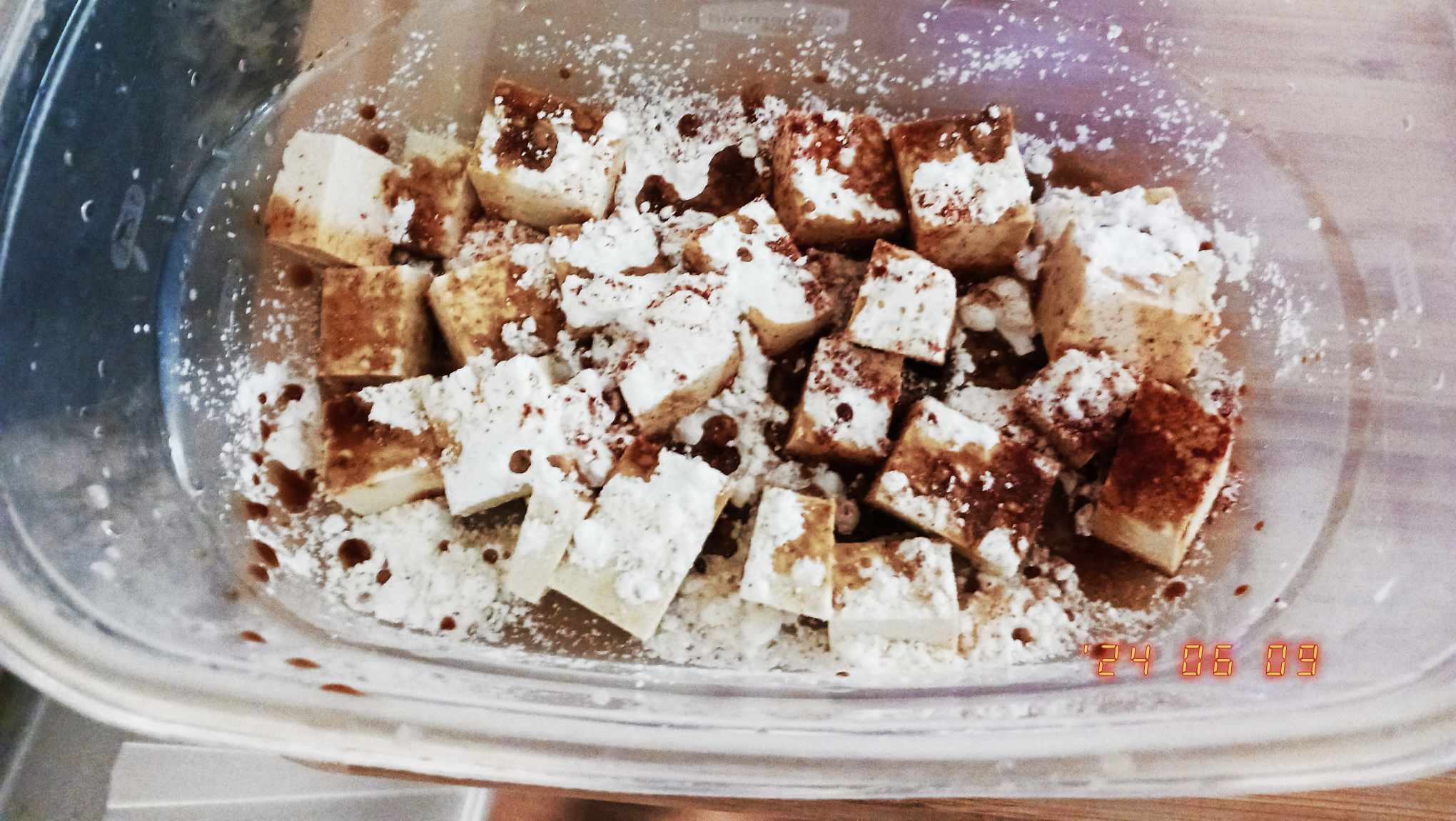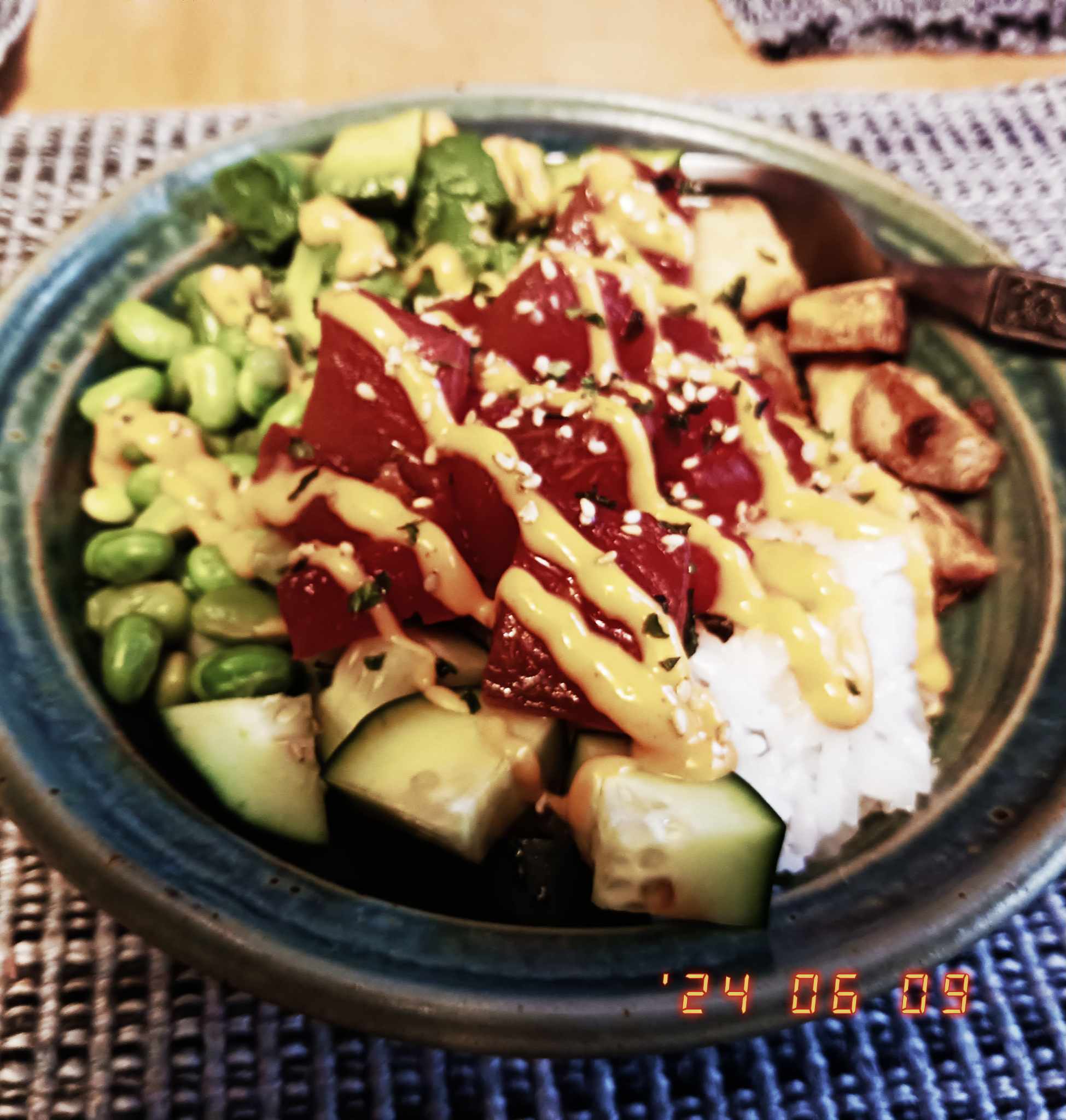Holy shit, y'all: it's poke bowl season
Monday, June 10th, 2024, 15:33
Mood:  Hungry
Hungry
I know it's "on trend" (or whatever) to eat seasonally but, to tell you the truth, I generally don't like doing that. I am an autumn foods girlie through and through. I like my root vegetables and my whatever squashes and pumpkins count as. Okay, fine, we need to reduce the effects of globalization on our food system, and yes the watermelons and cucumbers right now are going to be tastier than the fall foods, but let's face it: as a Hoosier who lives in a community where fresh food often rots on the shelves because people here don't buy and cook it, I am compelled to just pick what is Delicious.
That being said, if you are looking for a refreshing dish that's full of healthy carbs, protein, and fats, and that doesn't know if it's comfort food or a healthy salad--BECAUSE IT'S BOTH!--look no further than the beautiful POKE BOWL.
Many of the Asian and Pacific Island cultures have some form of dish consisting of rice, protein, and vegetables all put together on one miraculous bowl of soothing everythingness--oh my God can you tell I am starving as I write this?--and the poke bowl is the Hawaiian variation. Historically, the poke bowl was made with fish or some kind of seafood, but as a vegetarian I don't eat fish, so I have to be creative when fixing seafood. The answer? It may shock you.
Motherfucking watermelon.
Consider this a not-recipe, because I don't have any set-in-stone instructions for this, nor can I give you correct measurements. However, it's actually very simple to transform watermelon from its natural Popsicle-on-Earth form into a vegan landfish suitable for poke, sushi, and anything else where you might use an ahi or raw tuna. You firstly must slice the watermelon into chunks; you can either do bite-sized pieces like what you'd want for your dish, or just big wedges like you'd do for a barbecue or party. You'll then need to marinate it for anywhere between an hour to overnight in a combination of soy sauce (I recommend Kikkoman or another Japanese variety, as this flavor profile will lend itself best to the dish); vinegar (again, a Japanese rice vinegar is recommended); sesame oil; and torn-apart pieces of nori seaweed. The nori will make it taste like the ocean. I also want to note that the acidity of the vinegar is what will ultimately neutralize the sweetness of the watermelon.
When you're ready to start cooking your poke bowl, you'll need to set your oven to 350F or 180C, and then roast the watermelon pieces in their juices uncovered for about one hour. This will soften the watermelon and give it a mouthfeel comparable to raw fish. You can then let it cool and slice it and use it just as you would any raw fish for any raw fish dish.
What else goes in poke? Looking online, I saw tofu, edamamae, cucumber, avocado and, of course, rice. I asked The Country Pat which of those he'd choose and he said he'd choose them all--so that's what we did! The best part about this dish, in my opinion, is all the different textures and mouthfeels you get to experience in one go. We had the fatty softness of the avocado, the toughness from the edamame and tofu, the crunch of the cucumber and, of course, the delightful slipperiness of the watermelon, now masquerading as sushi-grade tuna. Fun fact: what Americans associate with "poke" now is extremely different from historical, traditional Hawaiian poke. Bowls like these are more influenced by Korean bibimbap or Japanese sushi, dishes already popular in the US at the turn of the 20th century when contemporary poke became popular. The US fish farming industry also had an impact.
So that's how we did poke from home last night. That said, where I live, there is a restaurant option for poke that's been in business for about five years now--and I have regrettably not gotten to go! Until last year, I additionally kept a gluten-free diet; however, last year I was medically cleared to not need that, so I have more choices available now. Will there be a poke post part two? I'm hoping so, soon!


